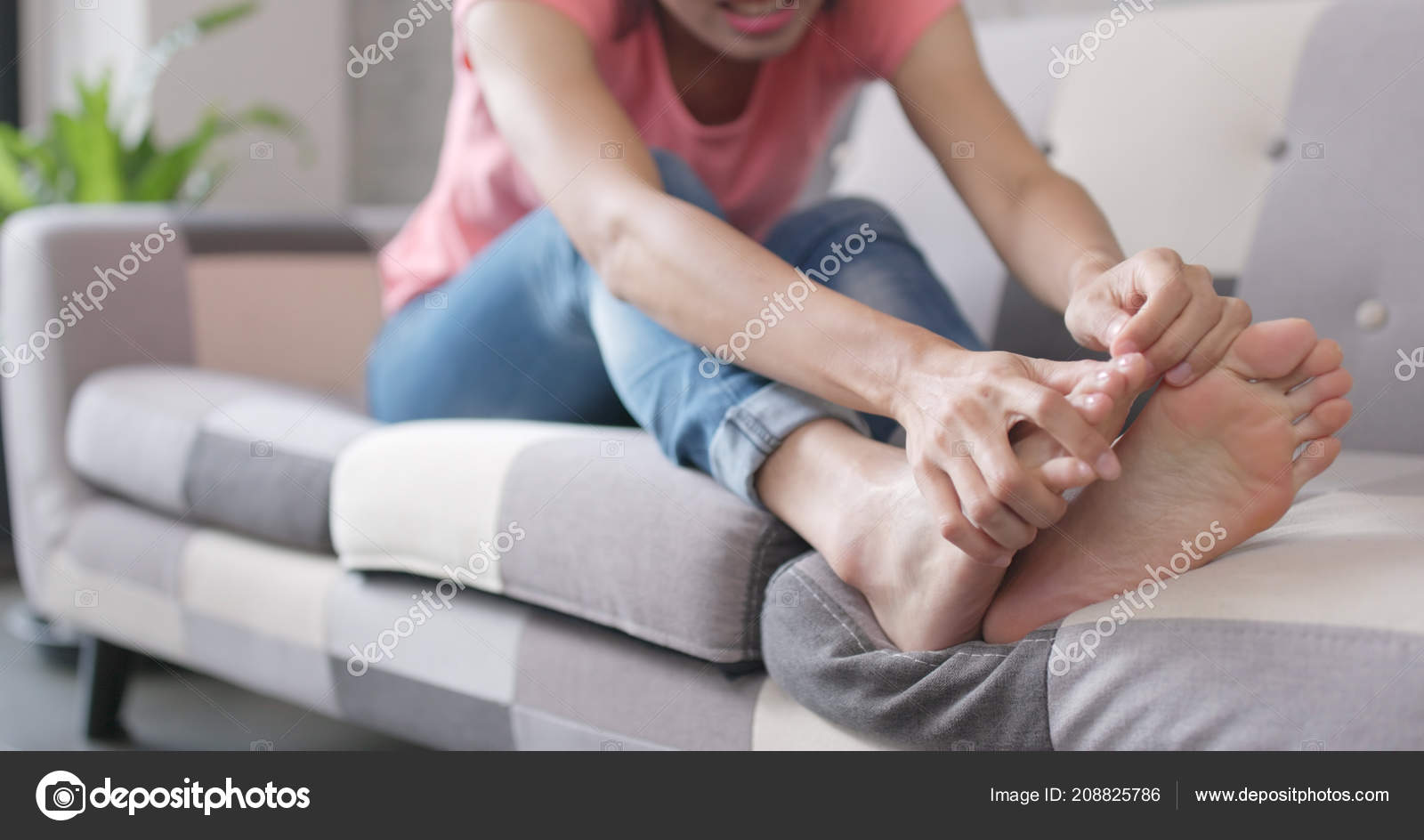Open Wart on Foot: Comprehensive Guide to Plantar Warts Symptoms and Treatment
What are plantar warts and how do they differ from other types of warts. What causes plantar warts and how can they be prevented. How are plantar warts diagnosed and what treatment options are available. Are there any home remedies for plantar warts. When should you seek medical attention for a plantar wart.
Understanding Plantar Warts: Causes and Characteristics
Plantar warts are a common skin infection that specifically affects the soles of the feet. These warts are caused by the human papillomavirus (HPV) and can be both uncomfortable and persistent. Unlike other types of warts, plantar warts grow inward due to the pressure of walking and standing, which can make them particularly painful.
Plantar warts have several distinguishing features:
- They appear as small, rough growths on the soles of the feet
- Often have tiny black dots in the center, which are actually small blood vessels
- May be painful when walking or standing
- Can grow in clusters, sometimes referred to as mosaic warts
- May be covered by a thick, callused layer of skin
The virus that causes plantar warts thrives in warm, moist environments, making public swimming pools, locker rooms, and communal showers common transmission areas. People with cuts or weak immune systems are more susceptible to developing these warts.

Differentiating Plantar Warts from Other Foot Conditions
Plantar warts can sometimes be mistaken for other foot conditions. How can you tell if that growth on your foot is indeed a plantar wart? Here are some key differences:
Plantar Warts vs. Corns and Calluses
While both plantar warts and corns or calluses can cause discomfort when walking, there are distinct differences:
- Plantar warts have a rough, grainy appearance and may have black dots
- Corns and calluses are areas of thickened skin without black dots
- Squeezing a plantar wart from side to side is usually painful, while corns and calluses typically hurt when pressed directly
Plantar Warts vs. Athlete’s Foot
Athlete’s foot is a fungal infection that can also affect the soles of the feet. However:
- Athlete’s foot usually causes itching, burning, and scaling of the skin
- Plantar warts are typically more localized and don’t cause widespread itching
- Athlete’s foot often affects the spaces between toes, while plantar warts do not
Prevention Strategies for Plantar Warts
While it’s not always possible to prevent plantar warts, there are several steps you can take to reduce your risk:

- Keep your feet clean and dry
- Wear sandals or water shoes in public showers, locker rooms, and around swimming pools
- Avoid walking barefoot in public areas
- Don’t share shoes, socks, or towels with others
- Change your shoes and socks daily
- Keep any cuts or scrapes on your feet clean and covered
- Strengthen your immune system through a healthy diet and lifestyle
By following these preventive measures, you can significantly reduce your chances of developing plantar warts.
Diagnosis and Treatment Options for Plantar Warts
Diagnosing plantar warts usually involves a visual examination by a healthcare professional. In some cases, they may scrape off a small section of the wart to examine under a microscope or perform a biopsy to rule out other conditions.
Once diagnosed, there are several treatment options available for plantar warts:
Over-the-Counter Treatments
- Salicylic acid: Available in various forms, including gels, pads, and drops
- Cryotherapy kits: These freeze the wart using a cold spray
Prescription Treatments
- Stronger salicylic acid preparations
- Bleomycin injections
- Immunotherapy to stimulate the body’s immune response
- Retinoids to disrupt wart cell growth
In-Office Procedures
- Cryotherapy: Freezing the wart with liquid nitrogen
- Electrocautery: Burning off the wart
- Laser therapy: Using intense light to destroy the wart
- Surgical excision: Cutting out the wart (used for resistant cases)
The choice of treatment depends on the size and location of the wart, as well as the patient’s overall health and preferences.

Home Remedies and Self-Care for Plantar Warts
While medical treatments are often necessary for stubborn plantar warts, there are several home remedies and self-care strategies that may help:
- Duct tape occlusion: Covering the wart with duct tape for several days at a time
- Apple cider vinegar soaks: Soaking the affected foot in diluted apple cider vinegar
- Tea tree oil: Applying diluted tea tree oil to the wart
- Garlic: Applying crushed garlic to the wart and covering with a bandage
- Pumice stone: Gently filing down the wart after soaking
It’s important to note that while these home remedies may work for some people, they are not scientifically proven and should be used with caution. Always consult with a healthcare professional before trying any new treatment.
When to Seek Medical Attention for Plantar Warts
While many plantar warts will eventually go away on their own, there are instances where medical attention is necessary. You should consult a healthcare provider if:
- The wart is painful or interferes with your daily activities
- The wart persists for more than a few months despite home treatment
- You have diabetes or a weakened immune system
- The wart shows signs of infection (redness, swelling, pus, or fever)
- You’re unsure if the growth is a wart or another skin condition
- The wart is on your face or genitals
A healthcare professional can provide a proper diagnosis and recommend the most appropriate treatment plan for your specific situation.
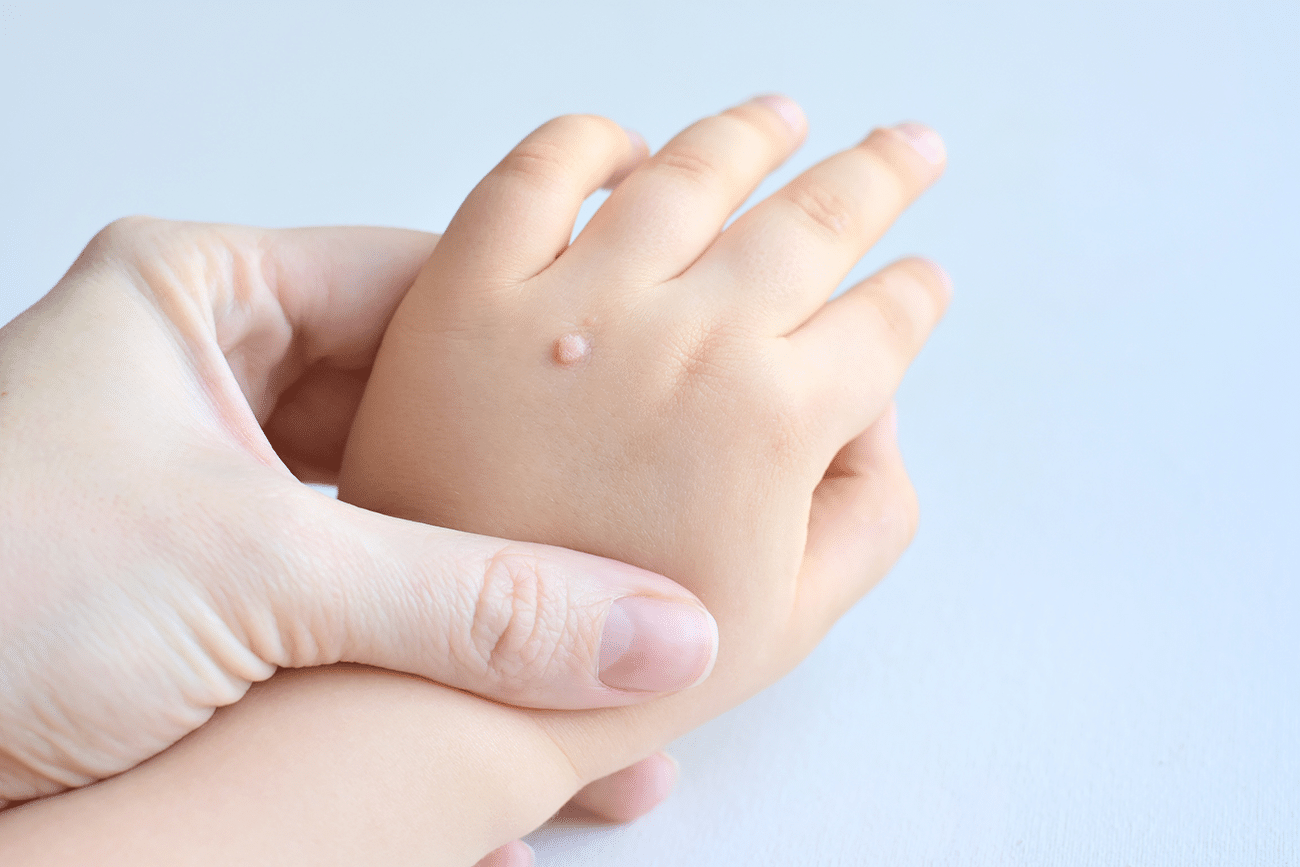
Impact of Plantar Warts on Daily Life and Activities
Plantar warts can significantly impact a person’s daily life and activities, particularly if left untreated. The effects may include:
- Pain or discomfort when walking or standing for long periods
- Difficulty participating in sports or exercise
- Embarrassment or self-consciousness about the appearance of feet
- Changes in gait or posture to avoid putting pressure on the wart
- Spread of warts to other areas of the foot or to other people
Given these potential impacts, it’s important to address plantar warts promptly and effectively. Early treatment can help prevent the warts from spreading and minimize their impact on your daily activities.
Myths and Misconceptions About Plantar Warts
There are several common myths and misconceptions surrounding plantar warts that can lead to confusion and improper treatment. Let’s debunk some of these:
Myth: Plantar warts have roots that grow deep into the foot
Fact: Plantar warts do not have roots. What appears to be roots are actually blood vessels that supply the wart with blood. The wart itself grows in the upper layers of skin.

Myth: Plantar warts are caused by frogs or toads
Fact: Plantar warts are caused by the human papillomavirus (HPV), not by contact with amphibians. This myth likely originated from the wart-like bumps found on some species of toads.
Myth: Plantar warts will always go away on their own
Fact: While some plantar warts may eventually disappear without treatment, this can take months or even years. Many warts require treatment to resolve, especially in adults.
Myth: Cutting a plantar wart will make it go away
Fact: Cutting or picking at a plantar wart can actually cause it to spread or become infected. It’s best to leave any removal to a healthcare professional.
Understanding these facts can help you make more informed decisions about treating and preventing plantar warts.
What to Do About Warts (for Parents)
en español: Primeros auxilios: Verrugas
Reviewed by: Elana Pearl Ben-Joseph, MD
Primary Care Pediatrics at Nemours Children’s Health
What Are Warts?
Warts are common skin infections. They can affect any area of the body, but tend to happen on the fingers, hands, elbows, and bottom of the feet. Warts usually don’t cause serious problems, so they may not need to be removed.
There are several types of warts, including common warts, flat warts, and plantar warts. They can be flesh-colored, or lighter or darker than the skin that surrounds them. Sometimes they have tiny black dots in them.
What Are the Signs & Symptoms of Warts?
Of a common wart:
- located on back of hands, around nails, and in the mouth, or at the site of cuts and scratches
- a small, firm, rough bump
- can look like cauliflower
- pink or white soft bumps in the mouth
- tiny black dots inside the wart
Of a flat wart:
- located on the face, neck, arms, or legs
- small smooth bumps with a flat top
- may be in groups of 20 to 100
Of a plantar wart:
- located on the sole of the foot
- pressed into the skin
- may be painful
What Can I Do About Warts?
Without treatment, it can take anywhere from 6 months to 2 years for a wart to go away. Ask your doctor to recommend wart removal treatments.
Ask your doctor to recommend wart removal treatments.
Most warts can be handled at home. Here’s how:
- Soak the wart in warm water for at least 10 minutes.
- Remove dead skin on the wart’s surface by filing with an emery board (that’s never going to be used for nails) before applying medicine. Be careful not to file into the normal skin around the wart.
- Apply medicine (over-the-counter or prescription) to the wart. Keep the area of the wart covered while the medicine works.
- Wash your hands after touching the wart.
Get Medical Care if:
- a young child or infant has a wart anywhere on the body
- the wart is on the face, genitals, or anal area
- the wart becomes painful or red
- the wart is swollen, bleeding, or oozing pus
What Can Help Prevent Warts?
It’s not always possible to prevent warts. But it’s always a good idea to teach kids to wash their hands and skin often. If your child has a cut or scratch, use soap and water to clean the area because open wounds are more likely to develop warts and other infections. If a wart develops, make sure your child doesn’t scratch the area.
If a wart develops, make sure your child doesn’t scratch the area.
Reviewed by: Elana Pearl Ben-Joseph, MD
Date reviewed: February 2023
Share:
/content/kidshealth/misc/medicalcodes/parents/articles/warts-sheet
Warts and verrucas – NHS
Warts and verrucas are small lumps on the skin that most people have at some point in their life. They usually go away on their own but may take months or even years.
Check if you have a wart or verruca
Warts feel firm and rough. They can appear on palms, knuckles, knees and fingers.
They can appear on palms, knuckles, knees and fingers.
Credit:
Custom Medical Stock Photo / Alamy Stock Photo https://www.alamy.com/stock-photo-common-wart-caused-by-hpv-human-papilloma-virus-12116023.html?pv=1&stamp=2&imageid=7EEACC6C-2295-43F6-9333-40E721861FDB&p=13365&n=0&orientation=0&pn=1&searchtype=0&IsFromSearch=1&srch=foo%3dbar%26st%3d0%26pn%3d1%26ps%3d100%26sortby%3d2%26resultview%3dsortbyPopular%26npgs%3d0%26qt%3dA8JE7M%26qt_raw%3dA8JE7M%26lic%3d3%26mr%3d0%26pr%3d0%26ot%3d0%26creative%3d%26ag%3d0%26hc%3d0%26pc%3d%26blackwhite%3d%26cutout%3d%26tbar%3d1%26et%3d0x000000000000000000000%26vp%3d0%26loc%3d0%26imgt%3d0%26dtfr%3d%26dtto%3d%26size%3d0xFF%26archive%3d1%26groupid%3d%26pseudoid%3d%26a%3d%26cdid%3d%26cdsrt%3d%26name%3d%26qn%3d%26apalib%3d%26apalic%3d%26lightbox%3d%26gname%3d%26gtype%3d%26xstx%3d0%26simid%3d%26saveQry%3d%26editorial%3d1%26nu%3d%26t%3d%26edoptin%3d%26customgeoip%3d%26cap%3d1%26cbstore%3d1%26vd%3d0%26lb%3d%26fi%3d2%26edrf%3d0%26ispremium%3d1%26flip%3d0%26pl%3d
Warts are usually skin coloured but may appear darker on dark skin.
Credit:
Science Photo Library https://www.sciencephoto.com/media/1129448/view
Verrucas appear on your feet. They have tiny black dots under the hard skin.
Credit:
Jankurnelius / Alamy Stock Photo https://www.alamy.com/stock-photo-wart-37478055.html?pv=1&stamp=2&imageid=3C13F6A2-AE03-41C9-BEE8-C3CF16A42165&p=267058&n=0&orientation=0&pn=1&searchtype=0&IsFromSearch=1&srch=foo%3dbar%26st%3d0%26pn%3d1%26ps%3d100%26sortby%3d2%26resultview%3dsortbyPopular%26npgs%3d0%26qt%3dC4Y7HY%26qt_raw%3dC4Y7HY%26lic%3d3%26mr%3d0%26pr%3d0%26ot%3d0%26creative%3d%26ag%3d0%26hc%3d0%26pc%3d%26blackwhite%3d%26cutout%3d%26tbar%3d1%26et%3d0x000000000000000000000%26vp%3d0%26loc%3d0%26imgt%3d0%26dtfr%3d%26dtto%3d%26size%3d0xFF%26archive%3d1%26groupid%3d%26pseudoid%3d%26a%3d%26cdid%3d%26cdsrt%3d%26name%3d%26qn%3d%26apalib%3d%26apalic%3d%26lightbox%3d%26gname%3d%26gtype%3d%26xstx%3d0%26simid%3d%26saveQry%3d%26editorial%3d1%26nu%3d%26t%3d%26edoptin%3d%26customgeoip%3d%26cap%3d1%26cbstore%3d1%26vd%3d0%26lb%3d%26fi%3d2%26edrf%3d0%26ispremium%3d1%26flip%3d0%26pl%3d
Some warts are round, flat and can be yellow (plane warts). You can have many of them.
You can have many of them.
Credit:
CNRI/SCIENCE PHOTO LIBRARY https://www.sciencephoto.com/media/263358/view
Clusters of warts, spread over an area of skin (mosaic warts) are common on feet and hands.
Credit:
Oramstock / Alamy Stock Photo https://www.alamy.com/stock-photo-verrucas-on-foot-15866939.html?pv=1&stamp=2&imageid=375FEDA2-1B7E-414C-9D46-B8334986F284&p=51005&n=0&orientation=0&pn=1&searchtype=0&IsFromSearch=1&srch=foo%3Dbar%26st%3D0%26sortby%3D2%26qt%3DAPW5KT%26qt_raw%3DAPW5KT%26qn%3D%26lic%3D3%26edrf%3D0%26mr%3D0%26pr%3D0%26aoa%3D1%26creative%3D%26videos%3D%26nu%3D%26ccc%3D%26bespoke%3D%26apalib%3D%26ag%3D0%26hc%3D0%26et%3D0x000000000000000000000%26vp%3D0%26loc%3D0%26ot%3D0%26imgt%3D0%26dtfr%3D%26dtto%3D%26size%3D0xFF%26blackwhite%3D%26cutout%3D%26archive%3D1%26name%3D%26groupid%3D%26pseudoid%3D%26userid%3D%26id%3D%26a%3D%26xstx%3D0%26cbstore%3D1%26resultview%3DsortbyPopular%26lightbox%3D%26gname%3D%26gtype%3D%26apalic%3D%26tbar%3D1%26pc%3D%26simid%3D%26cap%3D1%26customgeoip%3D%26vd%3D0%26cid%3D%26pe%3D%26so%3D%26lb%3D%26pl%3D0%26plno%3D%26fi%3D0%26langcode%3Den%26upl%3D0%26cufr%3D%26cuto%3D%26howler%3D%26cvrem%3D0%26cvtype%3D0%26cvloc%3D0%26cl%3D0%26upfr%3D%26upto%3D%26primcat%3D%26seccat%3D%26cvcategory%3D*%26restriction%3D%26random%3D%26ispremium%3D1%26flip%3D0%26contributorqt%3D%26plgalleryno%3D%26plpublic%3D0%26viewaspublic%3D0%26isplcurate%3D0%26imageurl%3D%26saveQry%3D%26editorial%3D1%26t%3D0%26edoptin%3D
Warts do not cause you any harm, but some people find them itchy, painful or embarrassing. Verrucas are more likely to be painful – like standing on a needle.
Verrucas are more likely to be painful – like standing on a needle.
You can treat warts if they bother you, keep coming back or are painful.
A pharmacist can help with warts and verrucas
You can buy creams, plasters and sprays from pharmacies to treat warts and verrucas.
These treatments can take up to 3 months to complete, may irritate your skin and do not always work. You should not use these treatments on your face.
Your pharmacist can give you advice about the best treatment for you.
Non-urgent advice: See a GP if:
- you’re worried about a growth on your skin
- you have a wart or verruca that keeps coming back
- you have a very large or painful wart or verruca
- a wart bleeds or changes in how it looks
- you have a wart on your face or genitals
Information:
Genital warts can be treated at a sexual health or GUM clinic.
Find your nearest sexual health service
Treatment from a GP
A GP may be able to freeze a wart or verruca so it falls off a few weeks later. Sometimes it takes a few sessions.
Check with the GP if the NHS pays for this treatment in your area.
If treatment has not worked or you have a wart on your face, the GP might refer you to a skin specialist. Other treatments include minor surgery and treatment with laser or light.
How to stop warts and verrucas spreading
Warts and verrucas are caused by a virus. They can be spread to other people from contaminated surfaces or through close skin contact. You’re more likely to spread a wart or verruca if your skin is wet or damaged.
It can take months for a wart or verruca to appear after contact with the virus.
Do
wash your hands after touching a wart or verruca
change your socks daily if you have a verruca
cover warts and verrucas with a plaster when swimming
take care not to cut a wart when shaving
Don’t
do not share towels, flannels, socks or shoes if you have a wart or verruca
do not bite your nails or suck fingers with warts on
do not walk barefoot in public places if you have a verruca
do not scratch or pick a wart
Page last reviewed: 14 October 2020
Next review due: 14 October 2023
What happens if you tear off a wart? Removing any type of wart is very simple and painless!
Warts are benign epidermal neoplasms, the formation of which occurs as a result of the activation of the human papillomavirus, which can be in a latent state in the patient’s body for a long time.

Characteristic growths on the skin appear due to atypical cell division of the epidermis. The possible localization of warts is so diverse that sometimes it causes significant discomfort to its owner, being an unpleasant cosmetic defect. Removal of warts requires an exclusively professional approach, as well as a mandatory preliminary consultation with a specialist. We will try to figure out what will happen if you tear off a wart, and what actions should be taken in such a situation.
Can warts be cut off?
Being a benign skin neoplasm, a wart has a so-called “root”, which is not only responsible for intensifying the growth of skin cells, but can also lead to autoinoculation, spreading the pathological process to healthy tissues of the body. It is not difficult to understand what will happen if you cut off the wart, given the fact that it is impossible to remove the root of the formation on your own. As a result, not only will there be a growth of a new defect at the site of the former neoplasm, but generalized wartiness (EVLL) may also develop.
Independent mechanical removal of warts does not bring the expected effect primarily due to the fact that the main cause of the formation of such epidermal growths is the human papillomavirus (HPV), which, after cutting the wart, does not disappear from the patient’s body, but, on the contrary, is activated. It should also be borne in mind that the growth of a primary neoplasm is always provoked by a decrease in immunity and its susceptibility to the development of various pathologies, which also does not improve the patient’s condition after cutting out the wart.
In addition, self-removal of warts can lead to the following unpleasant consequences:
- Heavy bleeding . Such a reaction to mechanical traumatization of warts and papillomas is due to the wide growth of blood vessels and capillaries that feed the body of the neoplasm. Sometimes it is quite difficult to stop the bleeding on your own, which can lead to significant blood loss.

- Spread of the virus to healthy skin. As mentioned above, warts are prone to growth, which can be triggered by the ingress of infected blood onto the surface of healthy epidermal structures. Subsequently, skin cells begin to actively divide, forming child warts.
- Scar formation . To understand what will happen if you tear off a wart on your face, just look at a huge number of photos on the Internet that show scars and scars after self-removal of epidermal growths.
- Wound surface infection . An open wound, against the background of a weakened immune system of the wart owner, is prone to infection, which can be manifested by the development of an inflammatory process, swelling, hyperemia and suppuration of the wound, and can also provoke a systemic infectious process that is dangerous to human life and health.
All these unpleasant consequences can be completely avoided by consulting an experienced specialist in time, who will first of all help determine the type of neoplasm. The fact is that sometimes warts can be confused with such manifestations as calluses, syphilitic formations, lichen planus, etc. In the case of an incorrect diagnosis, self-removal of the defect can have severe consequences for the body.
The fact is that sometimes warts can be confused with such manifestations as calluses, syphilitic formations, lichen planus, etc. In the case of an incorrect diagnosis, self-removal of the defect can have severe consequences for the body.
What should I do if I accidentally tore off a wart?
It is not uncommon for a patient to have accidentally torn off a wart. The doctor will also tell you what to do in such a situation, however, before contacting a medical facility, you should definitely disinfect the injury site and try to stop the bleeding as soon as possible. Actual imposition of a tight bandage.
Removal of warts is a complex medical task, which today involves the use of such hardware techniques as laser destruction , electrocoagulation and cryodestruction. Highly qualified specialists of the NEOMED clinic, who care both about the health and the aesthetic condition of each patient, will help you decide what is the best way to remove warts, with a laser or nitrogen.
Find out the cost of the procedure “Removal of neoplasms”
How to remove warts at home using simple means
Society
11016
Share
Warts are a nuisance that can overtake anyone. They are quite harmless, but, to put it mildly, they do not color the skin.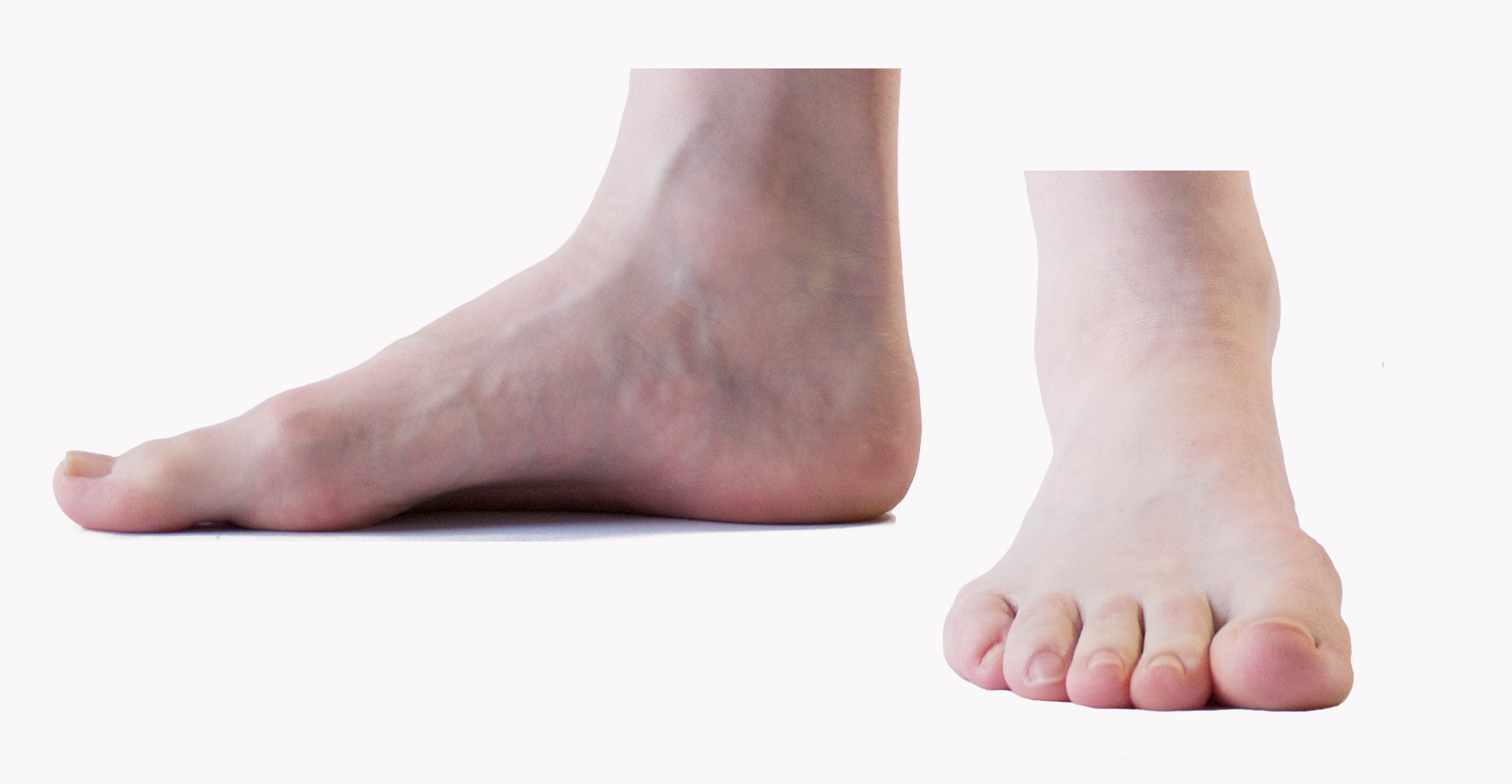 Rough to the touch, they have a pattern of tiny black dots that represent clogged blood vessels. We will show you how to get rid of these growths, and which method to use – everyone can decide for himself.
Rough to the touch, they have a pattern of tiny black dots that represent clogged blood vessels. We will show you how to get rid of these growths, and which method to use – everyone can decide for himself.
Photo: atlascompany\Freepik.
Causes of warts
Common warts are caused by the human papillomavirus (HPV). This virus is quite common and has more than 150 types, but only a few cause warts on the hands and other parts of the body. It can take two to six months for a wart to develop after the skin has been exposed to the virus.
Some strains of HPV are transmitted sexually. However, most forms are spread by casual contact with the skin of an infected person or through shared items such as towels, tissues, or washcloths. The virus usually spreads through breaks in the skin, such as hangnails or scratches. Biting your nails can also lead to warts on your fingertips and around your nails.
Each person’s immune system reacts differently to HPV, so not everyone who comes into contact with HPV develops warts. Most often, the virus simply does not take root on the healthy skin of a person with strong immunity, but exceptions still occur.
Treatment of warts with folk remedies
Exfoliation with pumice stone. One of the easiest and most effective ways to remove warts is to exfoliate them with a pumice stone. Pumice stone is naturally abrasive and is well suited for scraping or sanding warts, especially those found on the feet, so-called plantar warts, which form thick layers of calluses.
Pumice stone is an inexpensive way to remove warts from the surface of the skin, but be aware that warts have “roots”. Therefore, after exfoliating most of the wart with a pumice stone, you need to apply a composition that will destroy the roots and prevent their growth. It is best to apply a drop of salicylic acid.
Before using a pumice stone as an exfoliator, soak the surrounding skin in warm water for about 15 minutes to soften it. Be very careful when using a pumice stone on genital warts due to their increased sensitivity and thinner skin. People with diabetes or peripheral neuropathy should not use a pumice stone because they have reduced sensitivity and may damage surrounding tissue.
Be very careful when using a pumice stone on genital warts due to their increased sensitivity and thinner skin. People with diabetes or peripheral neuropathy should not use a pumice stone because they have reduced sensitivity and may damage surrounding tissue.
Acid dissolve
Another method for removing the fleshy part of the wart that is protruding from the surface of the skin is to use an over-the-counter salicylic acid preparation, which is widely available in pharmacies. Most warts are treated with a 17% salicylic acid solution or a 40% salicylic acid patch.
Salicylic acid is a type of keratolytic, which means that it dissolves the keratin (protein) of the surface of the wart and any calluses that may cover the growth from above. Getting rid of a large wart with salicylic acid can take several weeks, so patience is key.
Apply a little salicylic acid directly to the wart to dissolve it. Do it twice a day, morning and evening. Before applying salicylic acid, moisten the surrounding skin so that the medicine can better penetrate the roots of the wart. Remember that keratolytics irritate healthy skin, so be careful not to damage healthy tissue. The growth will gradually disappear within 1-2 weeks.
Remember that keratolytics irritate healthy skin, so be careful not to damage healthy tissue. The growth will gradually disappear within 1-2 weeks.
Cryotherapy method
Try the cryotherapy method to freeze the wart and remove it. Cryo (Greek kryos – cold, frost, ice) is a component of words denoting a connection with cold, professional dermatologists often use this procedure to get rid of warts. However, there are some over-the-counter nitrogen products available in pharmacies in liquid or aerosol form that you can use at home. The application of liquid nitrogen initially causes a blister to form around the wart, and after about a week, both the blister and the wart simply fall off. Usually it is required to apply such a tool at least twice in order to avoid that a new one does not grow in place of the fallen “beauty”.
This technique is virtually painless and causes only mild discomfort, but care must be taken – liquid nitrogen can leave a slight scar on very fair skin or cause dark spots on people with dark skin, so be careful when applying it to a wart.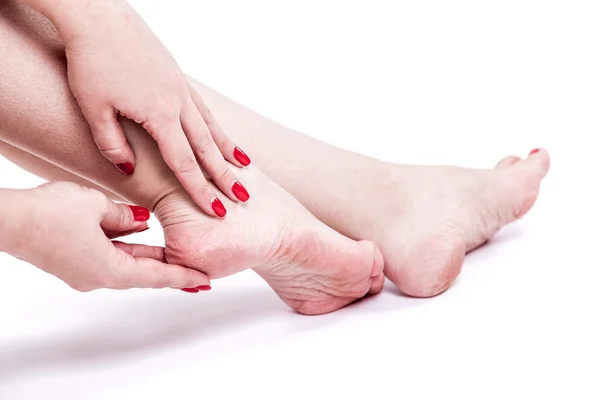
Although it is considered a folk remedy to use real ice to remove warts, by no means try to freeze warts with ice cubes from refrigerator molds or taken from the street! It is practically ineffective, and you can just freeze your skin.
Taping and tying with threads
Many people believe that applying ordinary duct tape to warts is an effective method of removing them, although how this works is largely a mystery. Most likely, the tape imperceptibly pulls the fibers out of the wart and removes its layers one by one, gradually reaching the roots. You just need to cover the wart with silver duct tape in the morning and change it every 2 days. When only a stain remains at the site of the wart, it also needs to be sealed for a couple of days to remove the roots. Due to its low cost, ease of use and lack of risk, the method is definitely worth a try.
It is impossible to ignore the well-known “grandmother’s” method, which consists in tying a tight-tight wart with threads at the very base. Thus, it loses its blood supply, gradually dries up and disappears after a while. However, there is no guarantee that a new one will not grow in this place.
Thus, it loses its blood supply, gradually dries up and disappears after a while. However, there is no guarantee that a new one will not grow in this place.
Herbal remedies for warts
Garlic . Garlic is a well-known home remedy that has been used for many ailments since antiquity. In the twentieth century, it was found that its antimicrobial properties are associated with the chemical allicin, which can kill various microorganisms, including viruses, including human papillomaviruses.
Raw minced garlic or a store-bought extract can be applied directly to warts a couple of times a day for a week or two. After you have applied it, cover the area with a bandage for several hours. It is best to do this in the evening before going to bed so that allicin can be deeply absorbed into the wart and reach its roots. A 2005 scientific study found that garlic extract completely healed warts in a few weeks and no recurrence was noted even after 4 months. Alternatively, if less effective, garlic dry extract capsules or fortified garlic oil capsules can be taken orally if you are confused by the prospect of “smelling” garlic.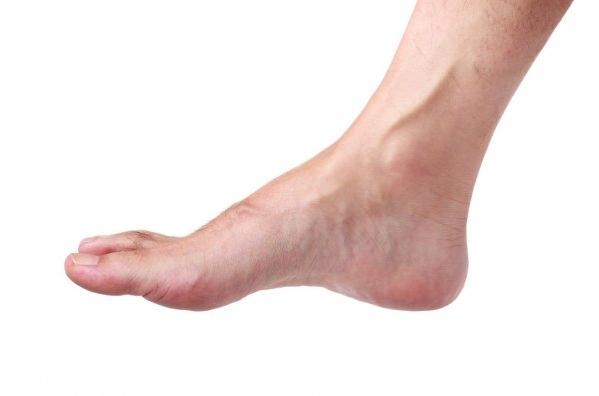
Thuja oil
Thuja oil contains compounds that can stimulate certain cells of the immune system to effectively cleanse the skin and kill viruses or virus-infected cells, which is useful for removing warts. Apply thuja oil directly to the warts, let it soak in for a few minutes, then cover with a bandage for 2-3 hours. Repeat the procedure twice a day for two weeks.
This oil is obtained from the leaves and roots of red cedars and is effective in many diseases and conditions due to its strong antiviral properties. But keep in mind that thuja oil is quite potent and can irritate sensitive skin. Therefore, it makes sense to dilute it with mineral oil or cod liver oil.
However, thuja oil is often recommended for old warts that are resistant to other treatments. Significant results are usually seen with 1-2 months of daily use.
Tea Tree Oil
Tea Tree Oil is an antimicrobial agent that is excellent for boosting immunity. It can help eliminate the human papillomavirus and prevent it from re-infecting. Treatment for topical treatment of warts can be started with 2-3 drops of tea tree oil applied to the wart 2 times a day for at least 3-4 weeks. This oil has been a popular natural anti-inflammatory for many centuries in Australia and New Zealand, and in recent decades has become widely used throughout the world.
It can help eliminate the human papillomavirus and prevent it from re-infecting. Treatment for topical treatment of warts can be started with 2-3 drops of tea tree oil applied to the wart 2 times a day for at least 3-4 weeks. This oil has been a popular natural anti-inflammatory for many centuries in Australia and New Zealand, and in recent decades has become widely used throughout the world.
However, it is worth knowing that it can cause both irritant and allergic skin reactions in some particularly sensitive people, although these are extremely unlikely. An important point: never take tea tree oil orally, as it can be poisonous.
Should I see a doctor about warts?
If you have tried to get rid of warts and they don’t go away, see a dermatologist at your local clinic or visit a private clinic. But remember that warts are not considered a serious medical problem and you may not be offered any treatment unless they look suspicious or cause pain – sometimes warts go away on their own.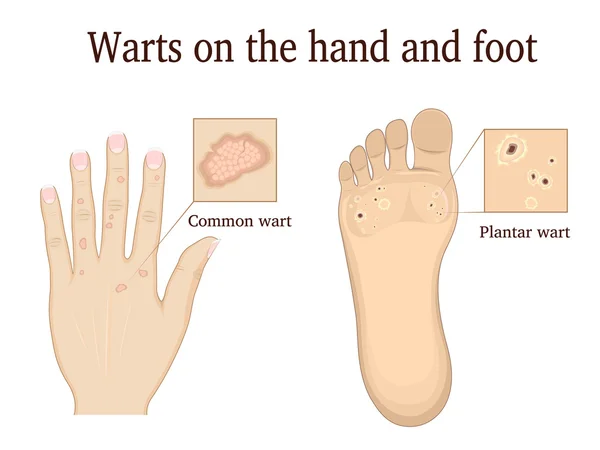 Still, sometimes it makes sense to make an appointment with a dermatologist. Perhaps he will suggest an effective method of getting rid of this problem.
Still, sometimes it makes sense to make an appointment with a dermatologist. Perhaps he will suggest an effective method of getting rid of this problem.
You should definitely consult a doctor if you have a lot of warts and they interfere with your daily life. Sometimes these growths can develop in large clusters on the arms and legs, making it difficult to do daily activities. If this happens, talk to your doctor about treatment options that may help in this particular case.
It is best to seek medical attention if warts are painful, ooze fluid, or change appearance or color. Initially, you should not worry, but this may be a sign that a person has a more serious disease than just a wart. It is necessary to visit a doctor for a skin examination in order to get the correct diagnosis.
It is also worth talking to a doctor if multiple warts of different colors and sizes suddenly appear on closed areas of the body. This may be a sign that the immune system is not working properly. If the immune system has failed, the doctor must find out the cause of this condition. For example, it can be a serious infection that requires treatment, or an autoimmune disease, which also cannot be ignored.
If the immune system has failed, the doctor must find out the cause of this condition. For example, it can be a serious infection that requires treatment, or an autoimmune disease, which also cannot be ignored.
Expert opinion. Regina Lukovnikova, doctor:
– It has been observed that warts most often appear on skin with a rough and grainy texture. From my point of view, the best procedures for their removal are home cryotherapy or the application of salicylic acid in high concentration. I note that a 40 percent concentration has proven to be the most effective in the treatment of warts.
However, this does not mean that you should immediately jump to the maximum strength dosage. It is best to start with lower percentage doses and gradually increase every four weeks to a higher concentration if needed.
If your skin becomes red, irritated or starts to peel, stop using this product and consult a dermatologist. Laser cryotherapy may be used in the doctor’s office.

